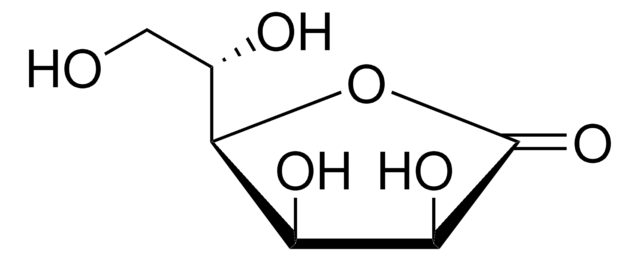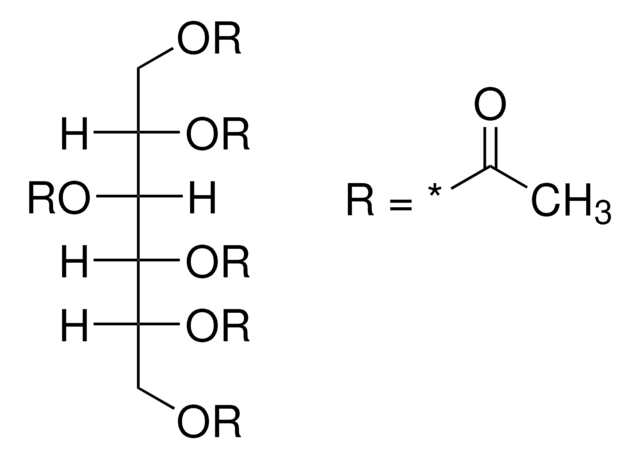240850
D-Sorbitol
99% (GC)
Sinónimos:
D-Glucitol
About This Item
Productos recomendados
vapor density
<1 (vs air)
Quality Level
vapor pressure
<0.1 mmHg ( 25 °C)
assay
99% (GC)
form
powder
optical activity
[α]20/D +104°, c = 0.4 in acidified ammonium molybdate
color
white
useful pH range
5.0-7.0 (25 °C, 182 g/L)
mp
98-100 °C (lit.)
solubility
water: soluble 182 g/L at 20 °C (68 °F )
SMILES string
OC[C@@H](O)[C@@H](O)[C@H](O)[C@@H](O)CO
InChI
1S/C6H14O6/c7-1-3(9)5(11)6(12)4(10)2-8/h3-12H,1-2H2/t3-,4+,5-,6-/m1/s1
InChI key
FBPFZTCFMRRESA-JGWLITMVSA-N
¿Está buscando productos similares? Visita Guía de comparación de productos
Application
Biochem/physiol Actions
Other Notes
Storage Class
11 - Combustible Solids
wgk_germany
WGK 1
flash_point_f
Not applicable
flash_point_c
Not applicable
ppe
Eyeshields, Gloves, type N95 (US)
Elija entre una de las versiones más recientes:
¿Ya tiene este producto?
Encuentre la documentación para los productos que ha comprado recientemente en la Biblioteca de documentos.
Los clientes también vieron
Nuestro equipo de científicos tiene experiencia en todas las áreas de investigación: Ciencias de la vida, Ciencia de los materiales, Síntesis química, Cromatografía, Analítica y muchas otras.
Póngase en contacto con el Servicio técnico






